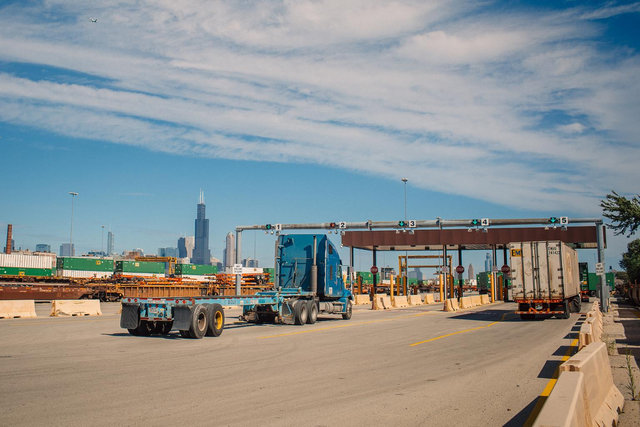
February 22, 2023
Union Pacific's GHG Reduction Goals Get a Lift from Hybrid Cranes
The railroad finalized contracts to purchase and test four hybrid cranes for use in its intermodal yards, with the first crane expected to be operational this fall and all four cranes in place by the end of 2024.
The cranes will be powered by both diesel and batteries. They will operate on battery, but when the battery packs are low, the diesel generator will kick in to charge the battery and power the crane.
Union Pacific expects the hybrid cranes will consume at least 50% less diesel than standard cranes.
“It’s incredible this technology exists, and we get to explore another avenue to reduce Union Pacific’s carbon footprint,” said Nicholas Smith, director – Maintenance and Repair. “We will be evaluating these cranes closely and exploring their potential for future use in other yards across our network.”
In February 2021, Union Pacific announced its target to reduce absolute Scope 1 and 2 GHG emissions by 26% by 2030 from a 2018 baseline. Since that time, Union Pacific has taken several concrete steps to reach its environmental goals, including purchasing battery-electric locomotives and conducting several tests on the use of renewable diesel and biofuels.
The hybrid cranes are another step forward in the company’s ESG journey.
Three of the cranes will be used at Union Pacific’s Global I and Global II intermodal terminals in the Chicago area. The cranes will arrive in sections and will be assembled on site with the first crane operational by late summer or early fall.
The Chicago cranes will be 65 feet tall and span 66 feet over two tracks and three driving lanes. They will replace two older diesel cranes, while adding an additional crane to the terminal’s overall inventory, allowing Union Pacific to more efficiently unload and load intermodal boxes from trains.
The fourth crane will be used at the railroad’s Los Angeles terminal. It will stand 40 feet tall and span 38 feet over one track and one drive lane. Sections of this crane are scheduled to arrive in mid-2024, with the crane operational later that year.
“One of the exciting features of these cranes is that they will not burden the local power grids. The diesel powers the battery, meaning there is no need for a charging station,” said Travis Van Houten, director – Strategic Sourcing.
“We’re testing new ground on these machines and, if they can do the same thing as our current cranes, it will be a sky-high win for all.”